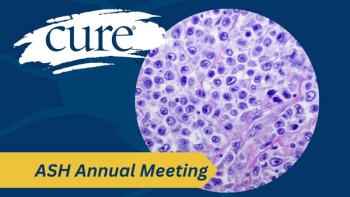
Rebuilding Resilience: Navigating Aging and Exercise After CLL
Key Takeaways
- Aging and CLL amplify fatigue, anemia, and infection risks, impacting physical activity and recovery.
- Tailored strategies, such as anti-inflammatory diets and strength training, can enhance resilience in older adults with CLL.
After running the Boston Marathon at 67, I faced new limits from aging and chronic lymphocytic leukemia — but I’ve found ways to stay strong and resilient.
In 2017, at age 67, I completed the Boston Marathon in under four hours. Despite the achievement, I noticed a shift — my recovery times lengthened, and my running pace slowed. This marked the beginning of a new chapter in my fitness journey, one influenced by aging and my diagnosis of chronic lymphocytic leukemia (CLL).
The Intersection of Aging and CLL
Aging naturally brings about changes in our bodies, including decreased muscle mass, slower recovery, and reduced immune function. When coupled with CLL — a condition characterized by the overproduction of abnormal lymphocytes — these effects can be magnified. CLL often leads to fatigue, anemia, and increased susceptibility to infections, all of which can hinder physical activity and recovery.
Starting treatment at 75 with Brukinsa (zanubrutinib), a second-generation Bruton’s tyrosine kinase (BTK) inhibitor, has been manageable for me, with minimal side effects. However, the combined impact of aging and CLL has undeniably affected my motivation and ability to maintain an active lifestyle.
Strategies for Enhancing Resilience
Despite these challenges, research suggests that tailored strategies can help older adults, including those with CLL, improve their physical resilience:
1. Optimizing Nutrition
- Adopt an anti-inflammatory diet rich in whole foods, healthy fats, lean proteins, and antioxidant-rich fruits and vegetables.
- Ensure adequate protein intake (1 to 1.2 grams per kg of body weight daily) to preserve muscle mass.
- Monitor and address deficiencies in vitamin D, B12 and iron, which are common in older adults and can exacerbate fatigue.
2. Engaging in Strength and Mobility Training
- Incorporate resistance training two to three times a week to maintain muscle mass and bone strength.
- Practice balance exercises, such as tai chi or yoga, to reduce fall risk and enhance coordination.
- Engage in regular aerobic activities like walking to support cardiovascular health and combat fatigue.
3. Prioritizing Restorative Sleep and Managing Fatigue
- Maintain consistent sleep-wake cycles and limit stimulants to promote quality sleep.
- Pace activities and incorporate rest periods to prevent overexertion, which can worsen fatigue.
4. Supporting the Immune System
- Stay up to date with vaccinations, including those for pneumonia, shingles and the flu (non-live vaccines).
- Discuss the possibility of immunoglobulin replacement therapy with your healthcare provider if you experience frequent infections.
- Practice vigilant hygiene and take precautions in crowded places to minimize infection risks.
5. Fostering Mental Health and Purpose
Address feelings of depression or anxiety, which are common among older adults, especially those managing chronic illnesses like CLL.
Maintain regular social connections — through family, friends, support groups or community activities — to boost both mental well-being and physical resilience.
Engage in meaningful daily routines, hobbies, volunteer work or spiritual practices to provide a sense of purpose and enhance overall quality of life.
6. Coordinating Care Thoughtfully
Review medications regularly with your healthcare provider or pharmacist to minimize polypharmacy, avoid duplications and reduce the risk of adverse drug interactions.
Engage in advance care planning by discussing future healthcare goals and preferences, helping to maintain personal control and reduce uncertainty or stress for caregivers and loved ones.
Embracing a New Approach to Fitness
While the path back to exercise may differ from earlier years, it's essential to adapt and find new ways to stay active. By focusing on preserving strength, preventing complications, and personalizing care, we can work with our bodies to maintain resilience and functionality.
For more news on cancer updates, research and education, don’t forget to





